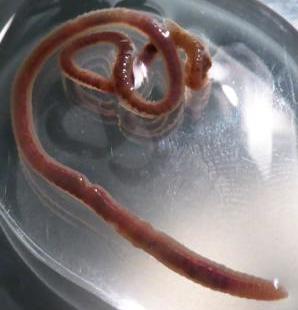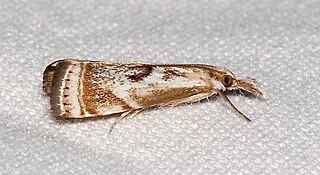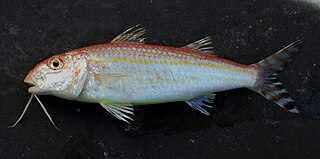
The Lumbriculidae are a family of microdrile oligochaetes common in freshwater environments, including streams, lakes, marshes, wells and groundwater. They should not be confused with the earthworm family Lumbricidae. Many species and genera are highly endemic, mainly in Siberia and the western parts of North America. Lumbriculidae are the only family in the order Lumbriculida.
Metastrongylus is a genus of nematodes of the family Metastrongylidae, usually found as lungworms in pigs and sometimes causing parasitic bronchitis. It causes a disease called metastrongylosis.

Dryocosmus are a genus of gall wasps. They are cyclically parthenogenetic insects that induce galls on plants in the family Fagaceae.

Porto Dinheiro is a locality in the civil parish (freguesia) of Ribamar, municipality of Lourinhã, in Portugal.

Astragalus asymmetricus is a species of milkvetch known by the common name San Joaquin milkvetch. It is endemic to California, where it grows in grassy and disturbed areas in the Central Valley and nearby parts of the Central Coast Ranges and San Francisco Bay Area.

Microcrambus is a genus of moths of the family Crambidae. The genus was described by Stanisław Błeszyński in 1963.
Parachorius is a genus of Asian Scarabaeidae or scarab beetles.

Upeneus is a genus of goatfishes native to the Atlantic, Indian and Pacific oceans.
Jaklapallisaurus is a genus of unaysaurid sauropodomorph dinosaur. It lived during the Late Triassic period in what is now Telangana, central India.The genus is monotypic, only including the species Jaklapallisaurus asymmetricus.
Microcrambus asymmetricus is a moth in the family Crambidae. It was described by Stanisław Błeszyński in 1967. It is found in Bolivia.

Meringopus is a genus of wasps belonging to the family Ichneumonidae.
Protogobiesox asymmetricus, is a species of fish in the family Gobiesocidae endemic to the deep-water off the north coast of Papua New Guinea. This species is the only known member of its genus. It is found in association with sunken logs and its unusual lateral symmetry may be an adaptation for this habitat. This species was described by Ronald Fricke, Chen Jhen-Nien and Chen Wei-Jen from a type locality of northeast of Taviltae, Madang Province in Papua New Guinea and these authors placed it in its own subfamily the Protogobiesocinae.
Acrosothrips is a genus of thrips in the family Phlaeothripidae. It is monotypic, being represented by the single species Acrosothrips asymmetricus.
Eclipidrilus is a genus of annelids belonging to the family Lumbriculidae.
Dasydytes is a genus of gastrotrichs belonging to the family Dasydytidae.
Mesoporos is a genus of dinoflagellates belonging to the family Prorocentraceae.
Sagocoris is a genus of true bugs belonging to the family Naucoridae.
Spermozoros is a genus of angel insects in the family Zorotypidae. There are six described species in Spermozoros, transferred to Spermozoros from the genus Zorotypus as a result of research published in 2020.

The asymmetrical goatfish is a species of marine ray-finned fish, a goatfish from the family Mullidae which is found in Indo-West Pacific. This species can reach a length of 30 centimetres (12 in) TL. Asymmetrical goatfish is a good food fish.
Presbistus is a genus of Asian stick insects in the tribe Aschiphasmatini, erected by William Forsell Kirby in 1896. Species currently have a known distribution in: India, Cambodia, Borneo, Java and Sumatra.
















